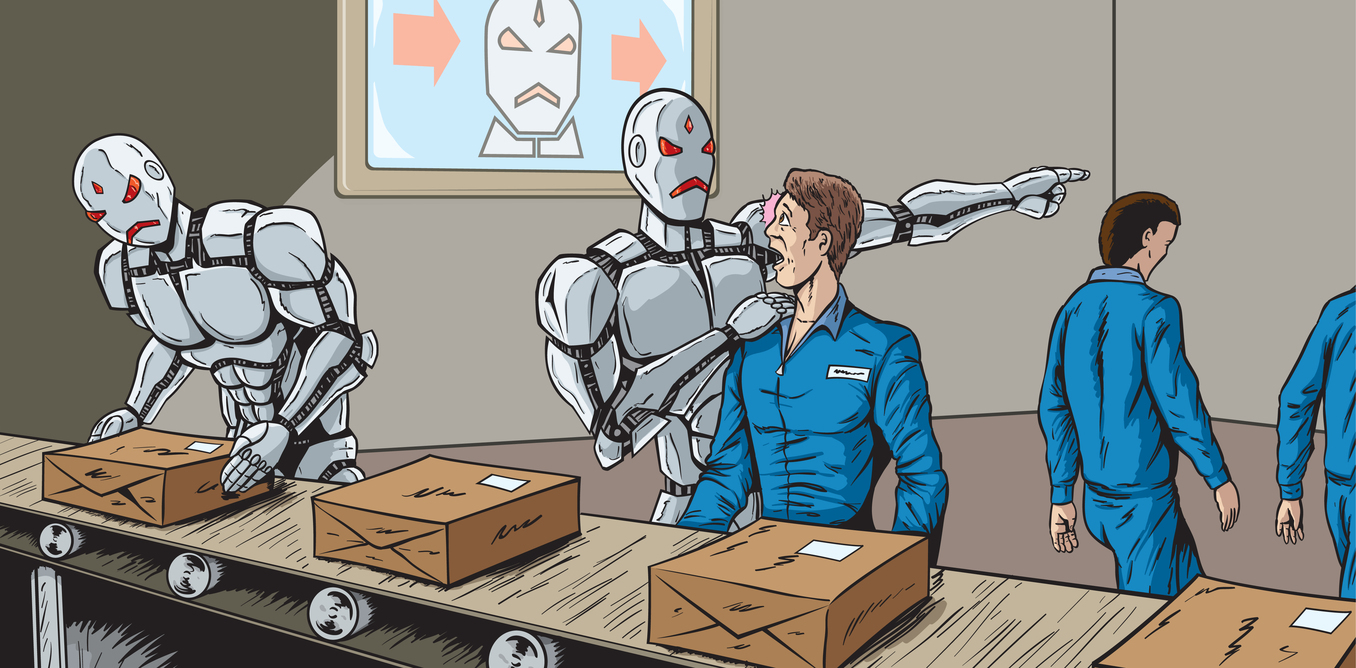I discovered science fiction at a young age and I adored it. I started out with the juvenile science fiction and graduated to the adult variety very quickly.
Time travel and space travel were the main topics of this fiction. Real science was rushing to catch up with fiction. The great authors of the field were seen as prophets because their stories covered topics such as “What if?” and “If This Goes On.”
But one of the main prophecies of that age never really came true — at least in the form the authors saw.
Robots.

From early days, people speculated about artificial humans. Czech writer Karel Čapek is credited with creating these beings in in a 1920 play “R.U.R”. Robota is a slavic word for “forced laborer”, used to describe peasants who worked for masters in feudal times.
Technophobia has always been a popular topic. One mainstay of science fiction is the tragedy when science runs amok.
“Frankenstein,” considered an early science fiction novel, preached that man should not try to “play God.”
Going much farther back, Icarus was a cautionary tale of trying to imitate the gods by flying — and it cost him his life.
Robots were always running amok in science fiction. They would rise up against their masters (because humans are always looking for slaves). The could think better and they were stronger. Robots were scary!
Almost all of Michael Crichton’s fiction is based on technophobia. Jurrasic Park is a modern day Frankenstein story — reviving extinct monsters who break free and rampage through a theme park.
Crichton’s most famous robot story in “West World.” Like “Jurrasic Park”, “Westworld” was a theme park. But in this one, cowboys and outlaws of the old west were robots. Guess what happens? Well, if you’ve seen the movie or the TV series you know. But it is pretty predictable.
Crichton’s earlier book “The Terminal Man” concerned a person with a computer implant in his brain. Of course he runs amok because he can’t control the brain implant.
The combination of man and robot is called Cyborg. And one of the most popular movies ever (a whole series of them) involves “The Terminator”. Talk about running amok. In the Terminator series, the whole world is over-run by robots in they future and they want to exterminate (or Terminate) the human species.
In cartoons, we had robots as slaves and servants. Who wouldn’t want Rosie the Robot from the “Jetsons” taking care of them? And robot workers could be on duty around the clock without breaks for food or drink or bathrooms. And once you bought them, you didn’t have to pay them.
In the real world we took pieces of robots and made them our slave. It also put a lot of humans out of work. But that’s what technology does — everything since the dawn of the industrial age has been to make labor easier or to take it away from humans entirely.
We have robot arms welding automobiles. We have robot eyes and hands guiding delicate surgery.
And we have robot brains — computers. They are everywhere and in almost everything.
We do have the robot mannikins of old science fiction. They are mainly toys. We even have robot pets. A machine that looks and performs like a human is really not all that necessary. We can get by with pieces of them. And the human form is not the most efficient shape and size to do what we really need.
An extremely exciting field of advancement is nanotechnology. This uses microscopic robots that can go places and do things limited only by what people can imagine.
One of the primary fields of development is medicine. Isaac Asimov had a revolutionary story called “Fantastic Voyage”. In this, a submarine and its crew were miniaturized and injected into the body of a famous scientist to travel through the bloodstream and into the brain. Their task was to break up a blood clot. The submarine exited the body through the tear duct and was restored to full size — everybody survived (except the patient — SPOILER!)
Nanotechnology might be used to do repairs inside the human body. Things like aneurisms or clearing arterial plaque — even rebuilding organs that are damaged are predictions for this field.
Another way nanotechnology is being used is as a delivery system for inter-cellular needs. These might be considered organic robots (or cyborgs). Could Sickle Cell Anemia be cured? Could neurological diseases like MS and ALS be reversed? Could T-Cells be delivered or even cultivated inside the bodies of AIDS victims?
Once we get away from the concept of robots as being the same size and shape as men with the same abilities the possibilities are endless.
And Exciting.